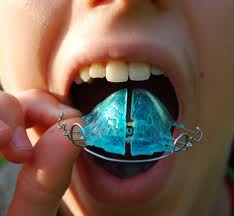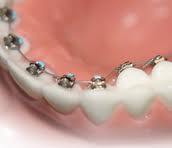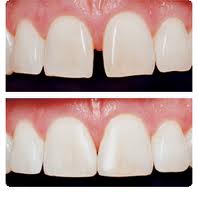Teeth straightening
Main page> Teeth straightening
A pleasing appearance has always been a vital component of self-confidence. Crooked, and overlapping teeth - even if they are free from cavities - are immediately noticeable as soon as you open your mouth or smile at people.
A smile is a curve that should be as straight as possible .
Why straighten your teeth?
Straight teeth help you to have a correct bite, and tochew and speak tidily. Not only do they contribute to healthy teeth and gums, but properly aligned teeth and jaws may improve your general attitude to life.
It is important to know that properly aligned teeth:
- collect less plaque (plaque is a sticky “film” compiled of bacteria, food and saliva, and it increases the risk of decay and gum diseases)
- are easier to clean (no overlapping, difficult-to-reach spots in your mouth)
- contribute to smaller risk for fracture (buckteeth are more likely to be broken in an accident)
- avoid destruction of the bone that holds the tooth (it can happen in some cases, especially if you have lived with misaligned teeth for a long time)
- prevent abnormal wear of teeth surfaces
- get rid of misalignment in the jaw joints, that sometimes leads to chronic headaches or pain
- help you chew better
What teeth straightening method can I choose?
It is important to know that the method that fits you depends on the degree of misalignment and set up by your orthodontist (this is the dentist who is straightening teeth after setting up a plan for you).
Teeth straightening without braces is also an option for people who want to abstain from very visible devices in their mouths. However, dentists claim that the most effective method for straightening young people’s teeth is the use of braces. Braces are usually quite uncomfortable in the first couple of weeks, but the majority get used to them eventually.
- The most usual appliances for teeth straightening purposes are braces or brackets. Brackets are usually made of silver coloured metal, tooth-coloured, or clear ceramic or plastic. It is important to emphasize that although clear braces are less noticeable than conventional stainless steel braces, they are not totally invisible.

- Removable orthodontic appliances (often referred as “retainers“) hold teeth in their new positions after a teeth straightening treatment is complete, but they can be used for moving some teeth too. They are constructed for unique needs.

- A great selection of headgears are also used as removable correctors (not so commonly). These help to correct conditions where the growth of the lower jaw doesn’t keep up with upper jaw growth, while other types, such as reverse pull headgear, face masks and chin cups, help when upper jaw growth does not keep up with the growth of the lower jaw. You might remember Willy Wonka’s headgear from the movie Charlie and the Chocolate Factory.

- Lingual braces use specially engineered brackets with wires, and are very useful for adults. They are placed on the back of the teeth, and it lets you get your teeth straightened invisibly.

- In some cases, and if you prefer immediate results, your dentist can cover your existing teeth with veneers to create a beautiful smile for you. To be able to do this, your teeth must be shaved in order to making room for the veneers to fit your other teeth and mouth. Being able to choose a whiter colour for your veneers than your original teeth colour, is an extra benefit.

- Immediate tooth contouring or reshaping can be done without veneers too, in this case, a small amount of enamel gets removed by a drill or laser, and gets replaced with a bonding. After this, your teeth are polished for a natural look.

- If the thought of having a mouth full of metal horrifies you, you can go for the invisible braces. These aligners are called Invisalign. Each of them is individually manufactured for your teeth, and needs to be changed after two weeks for the next set of aligners, in order to be reach the desired look.

It is highly important to remember that if you have healthy, but misaligned teeth, you should not look at veneers as a primary option!
How much does teeth straightening cost?
Usually, an early problem solving costs less than the restorative dental care that may be required to treat more serious problems that can develop after the age of 30-35. It is therefore important to get the right care as soon as possible, preferably before the age of 20. All these prices are only for reference, as your individual needs always need to be taken into consideration.
- Fixed metal braces: approx. £1200 per set
- Fixed ceramic braces: approx. £1600 per set
- Removable retainers: approx. £100
- Lingual braces: approx. £3500 per set
- Invisalign treatment: starting at £2,500

